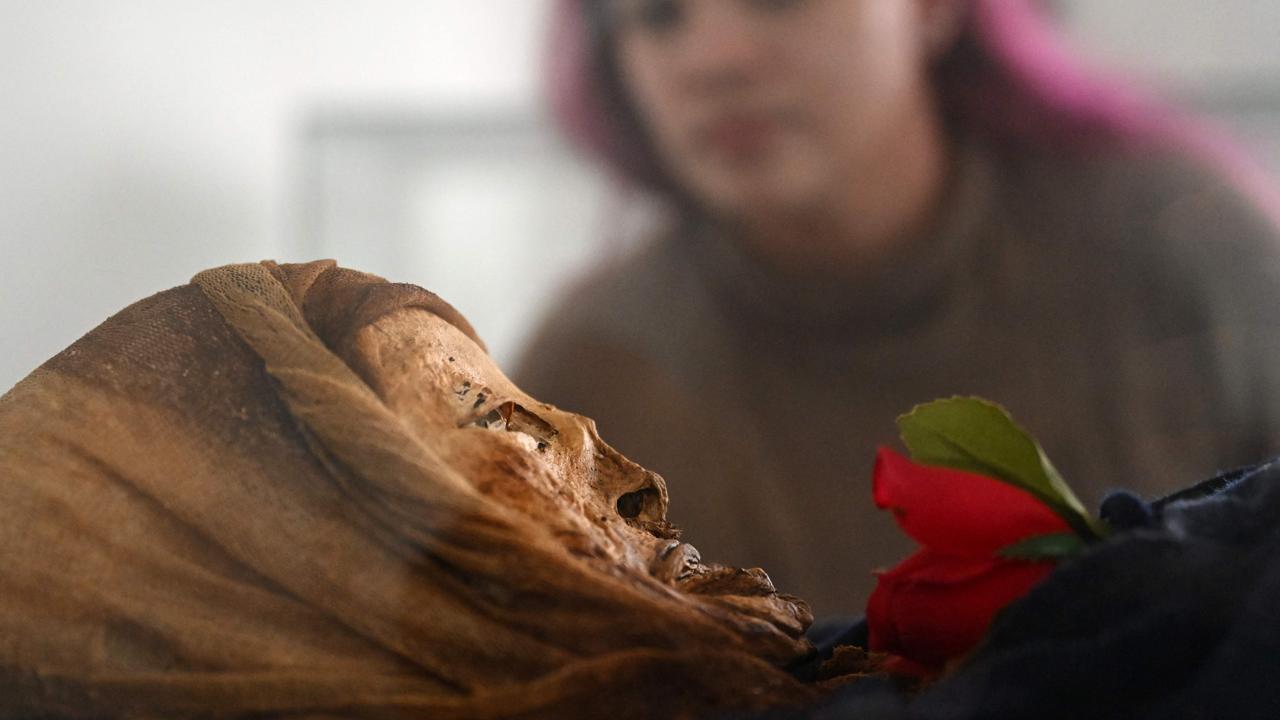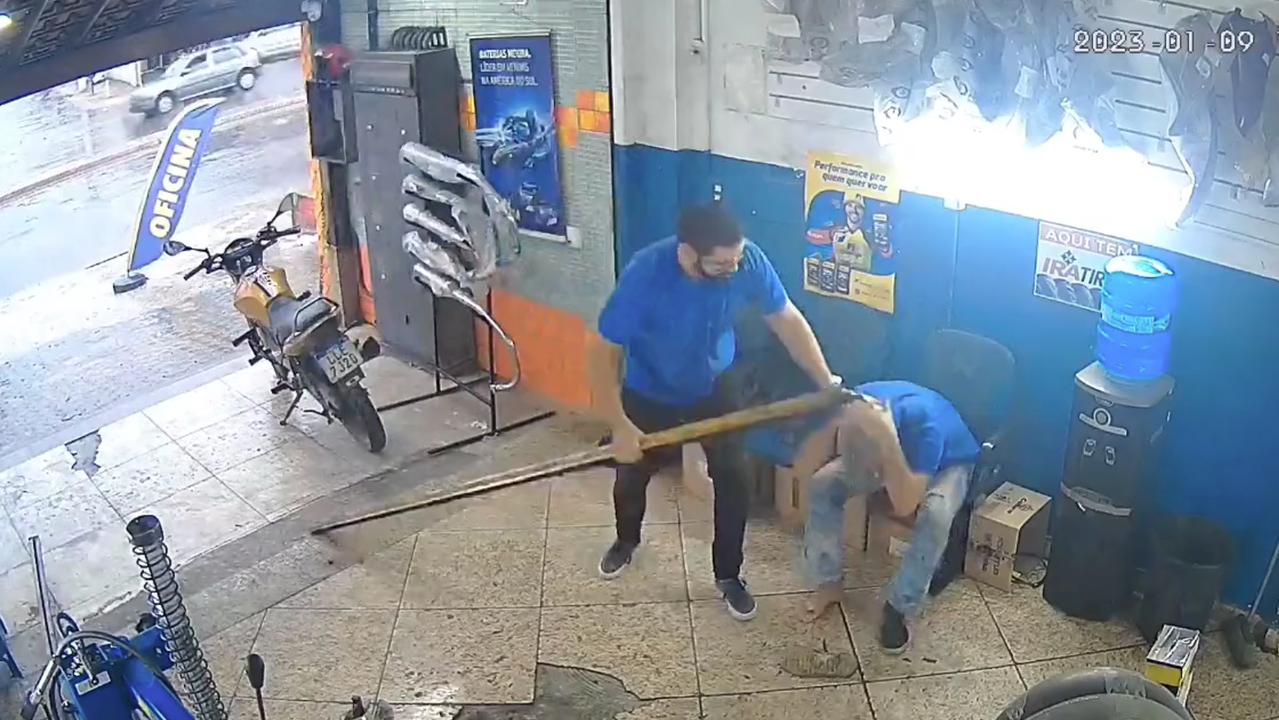The man-eating mountain of riches
DEEP within this mountain lies an unbelievable fortune, and more than eight million people have died trying to get their hands on it.
IT HAS been a week now since I crossed the Chilean-Bolivian border. At an altitude of 4600m, it was a crossing I’d rather forget.
Being a coastal dweller from Sydney, my body isn’t used to high altitudes and I really felt the effects. For two days I felt as though a vice was slowly being tightened on the sides of my head and performing normal tasks, like carrying my backpack 100m, somehow made me want to sleep for hours. Since crossing into Bolivia I’ve travelled through the Salt Flats of Uyuni, through small towns with nothing in them except for a few rundown houses, a couple of goats and small children playing on the side of the road. Arriving in the historical town of Potosi, my small group and I booked ourselves on a tour of the underground silver mine that has been operating in the area since the pre-Spanish era. The locals refer to the mountain as Cerro Rico or ‘Rich Mountain’. More recently, others have coined a new name for the mine: ‘The man-eating mine of Potosi’. During the time of Spanish rule, the colonial powers forced indigenous people to work the mines under harsh conditions. They had to work long hours and were forced to eat, sleep and live in the mineshafts. During Spanish rule, it is estimated that more eight million slaves lost their lives in the mines of Potosi. On a dreary Saturday afternoon, I boarded a rundown minibus and we made our way up the windy pass to the hill that looms over the town. On the way, we stopped at the miner’s market to buy gifts of alcohol, coca leaves and sticks of dynamite for the workers. It’s an odd feeling walking the streets with pure alcohol, bags of ammonium nitrate and sticks of dynamite. Though being Bolivia, like most other places in South America, safety doesn’t seem to be a priority for the workers, officials or general public. With zero instruction, we put on tattered over-shirts and pants, and added a miner’s hat and lamp to our ensemble before making our way to the mine entrance. Sloshing through the run-off water, we ducked and swerved to avoid overhanging rocks, rusted pipes and splintered timber supports as we delved further into the mountain. The stench of urine and mould filled my nostrils as the diameter of the tunnel restricted. After walking for 500m, the sound of voices reached my ears and we were soon greeted with the sight of miners sitting in a corral off to one side of the narrow path. They were not working but drinking alcohol and chewing coca leaves as a part of a celebration to appease the gods of the underworld. It was at this point that my situation struck me and I realised that I was in an extremely unsafe environment with limited oxygen and a group of strangers. Suddenly, our narrow tunnel seemed to restrict even further. The smell of cigarette smoke filled my lungs and seemed to stick in my face mask. I tried to recall any previous episodes of claustrophobia but couldn’t remember any. After sharing a couple of shots of some cheap, harsh Bolivian whiskey, we pressed on deeper into the mountain. The dust had by now caked into my eyes causing them to stick as I tried in vain to blink it out. Ahead I saw a makeshift ladder that led to an upper cavern that our guide Pedro, who by now had become quite merry due to shots of whiskey and constant sipping of beer, told us we were to ascend. Weighing up my options, I realised it was too late to turn back and agreed to climb the ladder. The last rung spun on two thin, rusted nails as my foot attempted to find a secure place to shift my body weight. Awkwardly I shimmied from the ladder and up the even narrower opening to a flimsy platform made of scrap timber. The platform, already laden with old machinery and rolls of steel cable, flexed as each member of our group climbed on top of it. By now Pedro seemed possessed from what I expected was a combination of too much coca and whiskey. He told us stories of the illnesses the men from the mine experience. He went into detail of his uncle bleeding from the ears, of his lungs being so damaged that he would return from work every day and bleed from the mouth, only to return to the mine the next day to repeat the daily struggle for survival. As the platform continued to flex, someone in the group asked how deep the hole was that we now found ourselves perched over. Eyes bulging from his head and sweat pouring from his brow, Pedro smiled and with apparent pride told us that the drop was 60m and would surely be enough to kill us should we fall. This was the final straw! My ability to breathe seemed to evade me as I began to sweat profusely and my vision gave way to nothing but white. Interrupting Pedro, I boldly announced that those near the exit had to move as my time in the mine had come to an end and I needed to leave. Pedro looked at me and smiled as he asked if I was sure about my decision. I knew I had never been surer of anything in my life as I ignored him and made my way off the platform and back down the dusty passageway to the main shaft. Twenty minutes later I emerged back into the daylight as a gentle rain began to fall. A feeling of relief filled my body as I realised that today was not going to be the day I died. Now that I have had a few days to process what happened in the mine, I have a new admiration for the miners of Potosi. Unlike me, many of them don’t have a choice and have to enter that mine in order to survive. The working conditions are beyond anything I could have expected before leaving the comfort of home. The life expectancy of the mineworkers is less than half of my own and the health issues that come with this line of work are horrific. On top of this, there is no guarantee of a stable wage as the money they receive is dependant on the quality of the minerals they extract from the earth. The highlands of Bolivia are an amazing place to visit. While it may take a while to come to terms with the headaches and shortness of breath from the altitude, the scenery is like nothing else on the planet. The vast open spaces, the high mountains, the smoking volcanoes, the flamingoes, the llamas, and yes, the mine at Potosi will all add to an experience that I will not soon forget. Read more of David’s adventures at his website Leftwithlouie.com.



